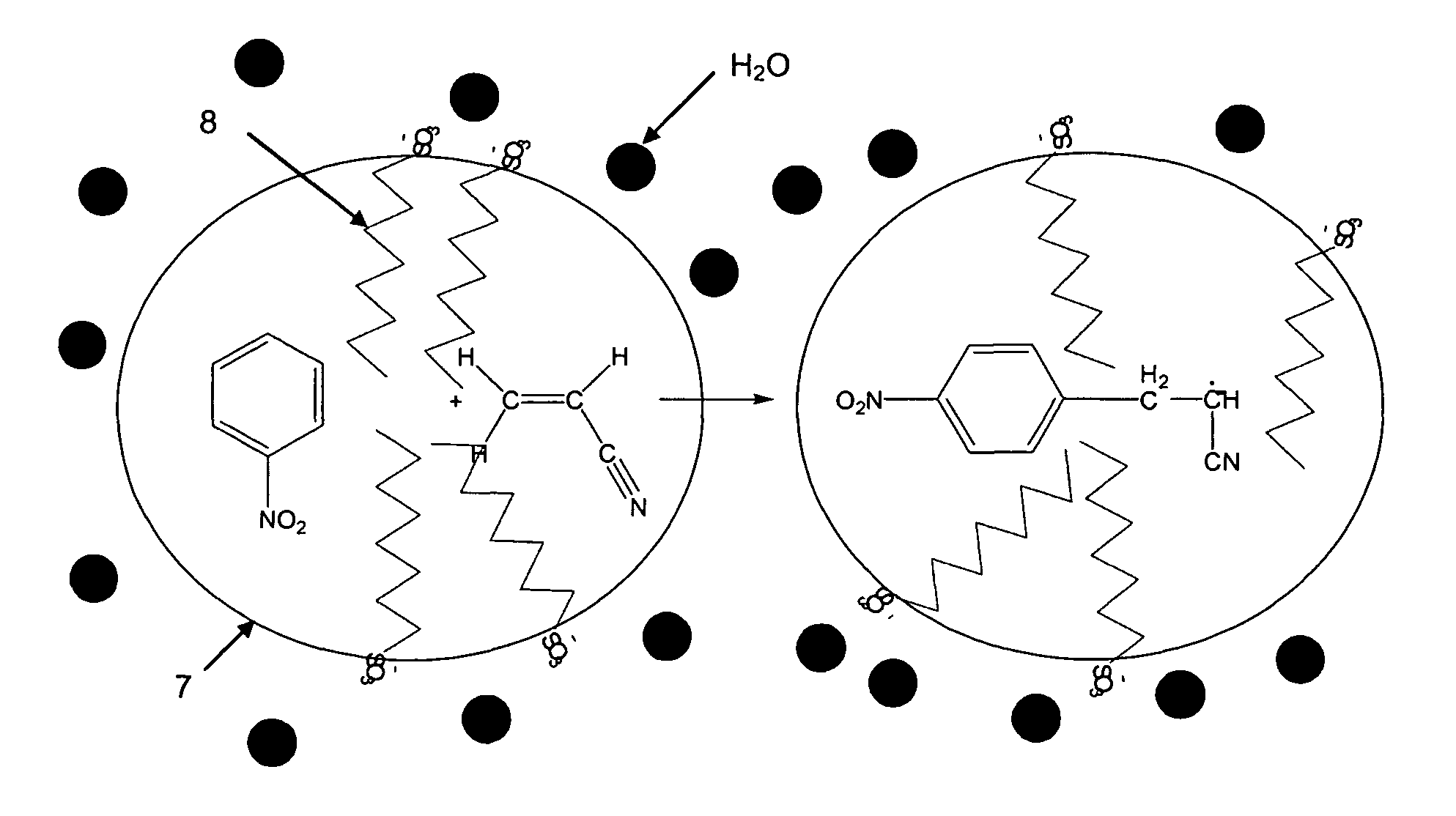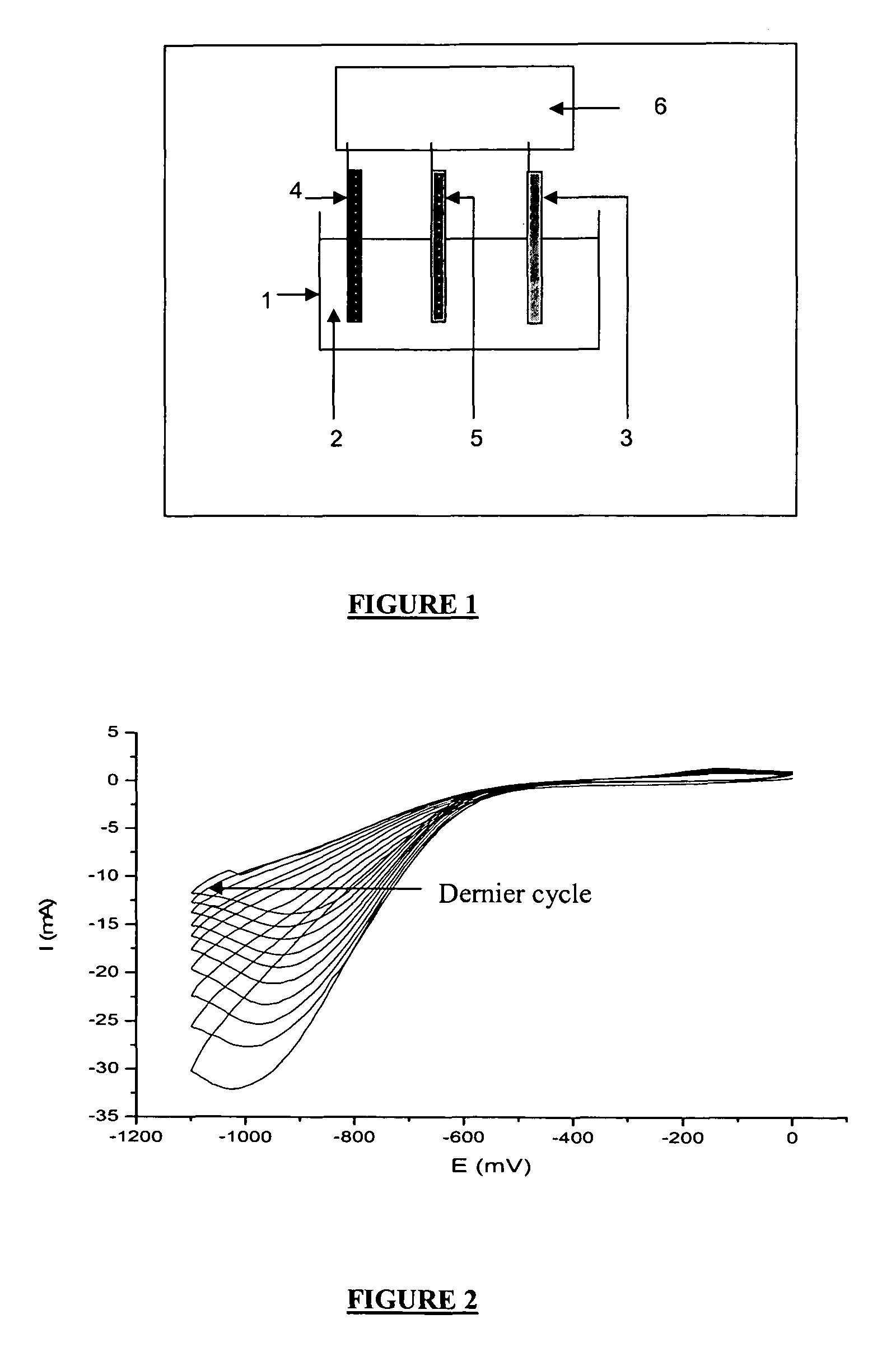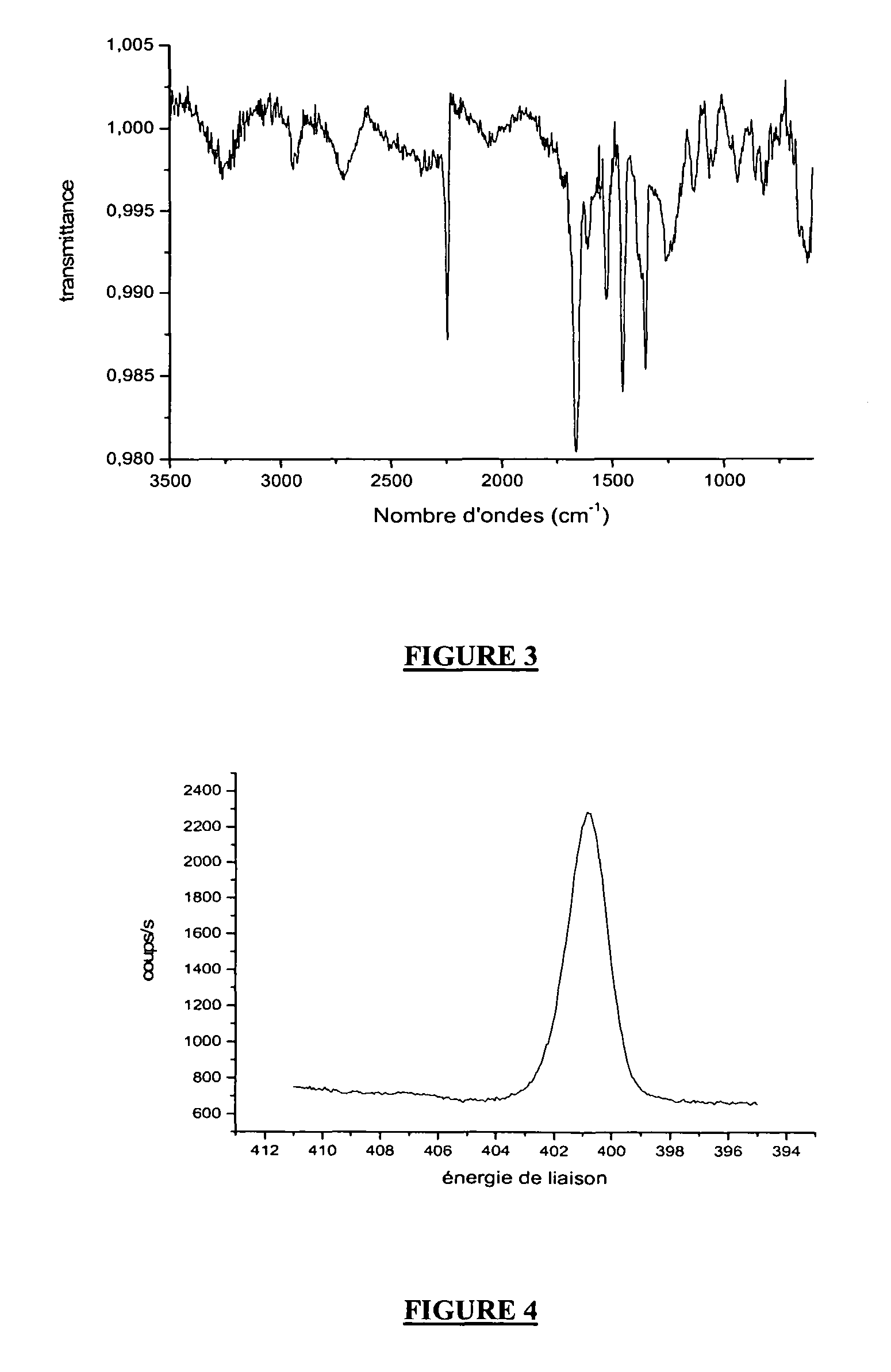Process for forming organic films on electrically conductive or semi-conductive surfaces using aqueous solutions
a technology of organic films and semi-conductive surfaces, applied in the field of surface coatings, can solve the problems of difficult control of the thickness of the film, unfavorable uniform deposit of spin coating techniques, and the inability to achieve effective grafting between the film, etc., and achieve the effect of less pollution and easy obtaining a certain variety of organic films
- Summary
- Abstract
- Description
- Claims
- Application Information
AI Technical Summary
Benefits of technology
Problems solved by technology
Method used
Image
Examples
example 1
Synthesis in Water of a Thin Film of Polyacrylonitrile Grafted on a Surface of Stainless Steel
[0123]In this example and the following, the electrolysis was carried out according to the assembly shown in FIG. 1, in a Teflon container 1 filled with an electrolyte solution 2 and comprising three electrodes. A reference electrode 5 that is an electrode of saturated calomel (SCA), a counter-electrode 4 of platinum and a working electrode 3 of stainless steel as indicated above. The electrodes have been coupled to a EG & G 273A brand potentiometer 6 sold by the PAR company (Princetown Applied Research).
[0124]In this example, the following electrolyte solution was prepared:
[0125]The protic solvent is deionized water containing 5 mol.l−1 (a) acrylonitrile (of which the solubility in deionized water is around 1 mol.l−1), 1.45 mol.l−1, (b) paratoluene sulfonate tetraethylammonium (anionic surfactant) and 1.8 10−3 mol.l−1 and (c) 4-nitrophenyl diazonium tetrafluoroborate (primer). The pH of th...
example 2
Grafting of a Polybutyl Methacrylate (PBuMA) Film on a Stainless Steel Surface by Electro-Polymerization in emulsion (Anionic Surfactant)
[0159]The surfaces were previously sanded with 10 μm sandpaper, then with a solution of diamond powder with a granulometry of 3 μm. The surfaces were then treated for five minutes with ultrasound in ethanol and then in acetone.
[0160]The reaction medium was made up of an aqueous electrolyte solution of butyl methacrylate (BuMA, solubility−1 in water) at 0.69 mol.l−1, of sodium dodecylsulfate (SDS) at 8 mmole.l−1 and 4-nitrobenzene diazonium tetrafluoroborate at 2 mmol.l−1. The pH solution was adjusted to 1.70 by the addition of pure sulfuric acid. The agitation was maintained by bubbling argon through the solution at the time of electrolysis. The molecules used in this example are represented in the following:
[0161]
[0162]The electrochemical parameters chosen here were: two cycles at equilibrium at −1.1 V at a speed of 10 mV / s with agitation by bubbl...
example 3
Grafting of a Film of Polybutyl Methacrylate (PBuMA) on a Stainless Steel Surface by Electro-Polymerization in Emulsion (Cationic Surfactant)
[0178]The electrolysis was carried out in a Teflon cell with three electrodes. The reference electrode is an SCE, the counter-electrode is a plate of carbon and the working electrode is stainless steel (316 L). The electrodes were coupled to a potentiometer of the EG & G 273A brand.
[0179]The surfaces were previously sanded with 10 μm sandpaper, then with a diamond powder with a granulometry of 3 μm. The surfaces were then treated for five minutes with ultrasound in ethanol, then in acetone.
[0180]The reaction medium was composed of an electrolytic aqueous solution containing butyl methacrylate at 0.69 mol.l−1, of ammonium tetradecyl trimethyl bromide (TTAB) at 8 mmole.l−1 and 4-nitrobenzene diazonium tetrafluoroborate at 4 mmole.l−1. The pH of the solution was adjusted to 1.7 by the addition of pure sulfuric acid. Agitation was maintained by bub...
PUM
| Property | Measurement | Unit |
|---|---|---|
| Fraction | aaaaa | aaaaa |
| Molar density | aaaaa | aaaaa |
| Molar density | aaaaa | aaaaa |
Abstract
Description
Claims
Application Information
 Login to View More
Login to View More - R&D
- Intellectual Property
- Life Sciences
- Materials
- Tech Scout
- Unparalleled Data Quality
- Higher Quality Content
- 60% Fewer Hallucinations
Browse by: Latest US Patents, China's latest patents, Technical Efficacy Thesaurus, Application Domain, Technology Topic, Popular Technical Reports.
© 2025 PatSnap. All rights reserved.Legal|Privacy policy|Modern Slavery Act Transparency Statement|Sitemap|About US| Contact US: help@patsnap.com



